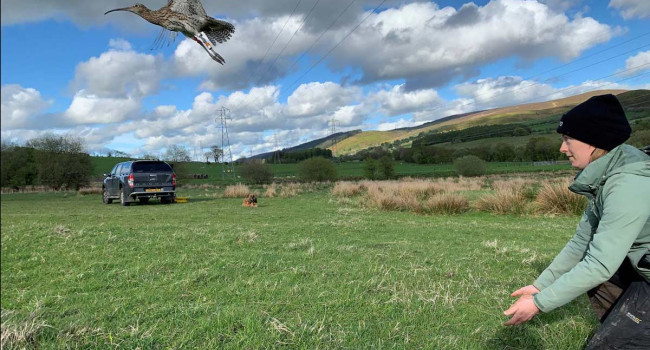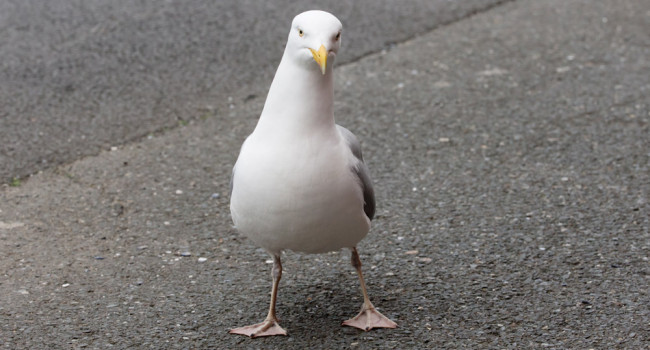Bird surveys reveal population changes - for mammals!
01 Oct 2013 | No. 2013-37
A new study, published in the European Journal of Wildlife Research, looks at the first 18 years’ data collected by Breeding Bird Survey volunteers to investigate how the populations of nine species of common mammal have changed at national and regional scales during this time.
same period
Bird surveyors have given the clearest picture yet of how nine of our common mammal species are doing. These are Grey Squirrel, Rabbit, Brown Hare, Mountain Hare, Red Fox, Reeves’ Muntjac, Red Deer, Fallow Deer and Roe Deer.
The results show that populations of four deer species (Roe Deer, Reeves’ Muntjac, Fallow Deer and Red Deer) all increased between 1995 and 2012. This is of concern given evidence that increased deer browsing in woodland can reduce the vegetation understorey and impact negatively on other woodland wildlife. In contrast, Rabbit numbers declined by 48% over the same period, following a large increase in Rabbit numbers prior to 1995 revealed by other studies. There are also fascinating regional differences in the trends for some species; for example, Brown Hare populations have declined by 50% in Northwest England but increased by 70% in the East Midlands. A significant increase in non-native Grey Squirrel numbers in Northwest England may be of concern, in relation to their potential impacts on native Red Squirrels that are now largely confined to Scotland.
Mammals are an important part of the UK’s biodiversity; several species are difficult to monitor and often require special surveys to determine their distribution or how their populations are changing over time. However, some widespread and easily detected species, such as deer, Rabbits and squirrels, can be monitored on an annual basis as part of bird surveys. To fill in the gaps, volunteer birdwatchers taking part in the Breeding Bird Survey have been recording sightings of mammals, as well as birds, since 1995 on randomly selected 1-km squares throughout the UK.
Lucy Wright, BTO, and lead author on the paper commented, “This study highlights the value of the BTO’s network of volunteers when it comes to monitoring groups other than birds”. She added, “The group of species covered in this study are an interesting mix of rapidly spreading invasives and species, such as Brown Hare, which are of conservation concern. There are many important conservation questions that could be investigated using this long-term dataset, so look out for more about mammals from BTO in the future.”
Lucy Wright, Stuart Newson and David Noble (2013), ‘The value of a random sampling design for annual monitoring of national populations of larger British terrestrial mammals’, doi: 10.1007/s10344-013-0768-x, is published in the European Journal of Wildlife Research on 15 October 2013.
Notes for Editors
- The nine mammal species include Grey Squirrel, Rabbit, Brown Hare, Mountain Hare, Red Fox, Reeves’ Muntjac, Red Deer, Fallow Deer and Roe Deer.
- The paper uses 18 years of Breeding Bird Survey (BBS) mammal data (1995-2012) collected each year from about 3,000 sites spread across the whole of the UK. BBS data were collected as part of the British Trust for Ornithology / Joint Nature Conservation Committee / Royal Society for the Protection of Birds partnership.
- The BTO is the UK's leading bird research charity. A growing membership and up to 60,000 volunteer birdwatchers contribute to the BTO's surveys, collecting information that underpins conservation action in the UK. The BTO maintains a staff of 100 at its offices in Thetford, Stirling, Bangor (Wales) and Bangor (Northern Ireland), who analyse and publicise the results of surveys and projects. The BTO's work is funded by BTO supporters, government, trusts, industry and conservation organisations. www.bto.org
- The European Journal of Wildlife Research is published by Springer. Contents lists are available at http://link.springer.com/journal/volumesAndIssues/10344
Contact Details
Dr Lucy Wright
(BTO Research Manager)
Office: 01842 750050
(9am to 5.30pm)
Email: lucy.wright [at] bto.org
Paul Stancliffe
(BTO Media Manager)
Office: 01842 750050
(9am to 5.30pm)
Mobile: 07585 440910 (anytime)
Email: press [at] bto.org
Images are available for use alongside this News Release.
Please contact iimages [at] bto.org quoting reference 2013-37
The BTO has an ISDN line available for radio interviews.
Please contact us to book an interview
Office: 01842 750050







Share this page